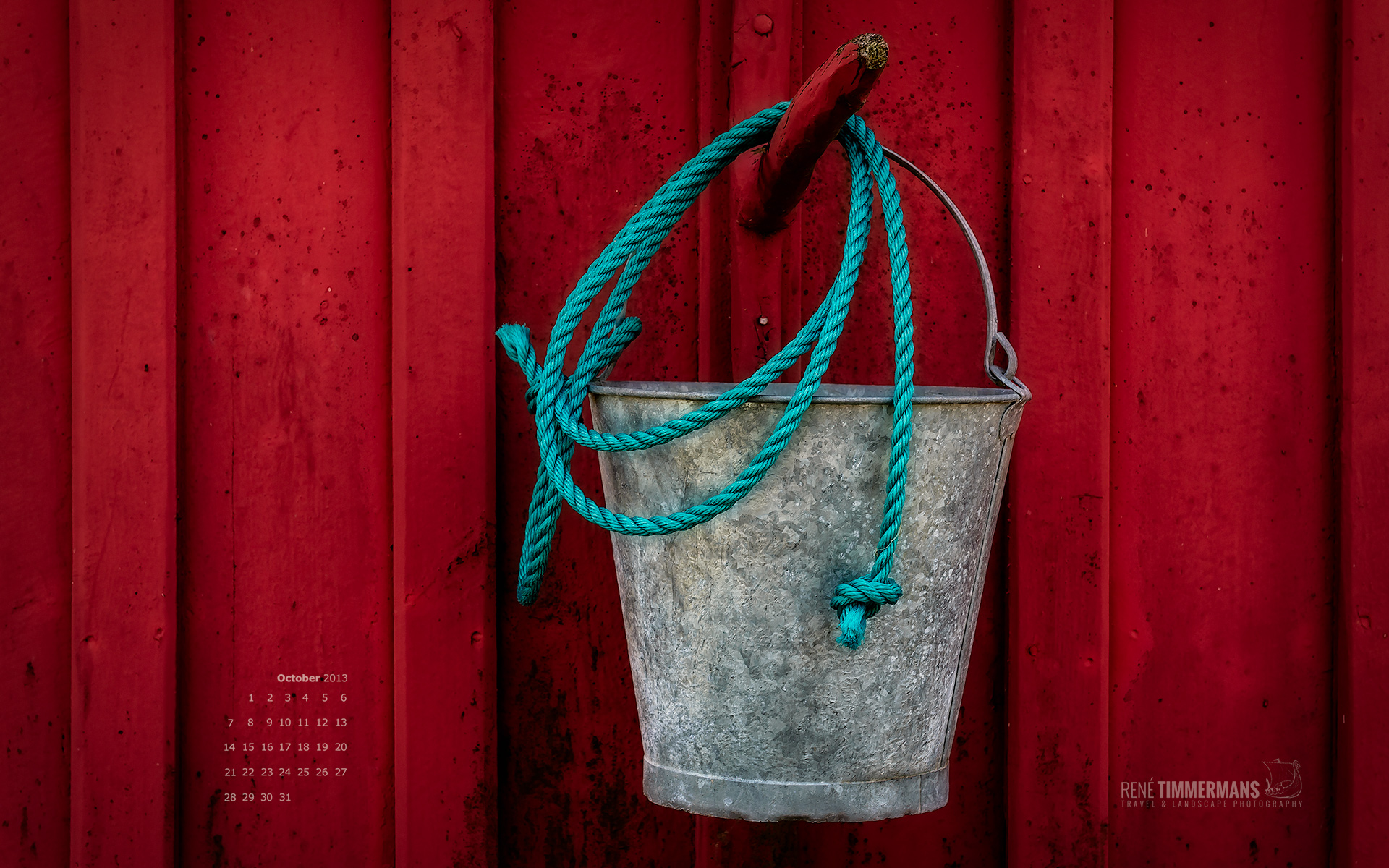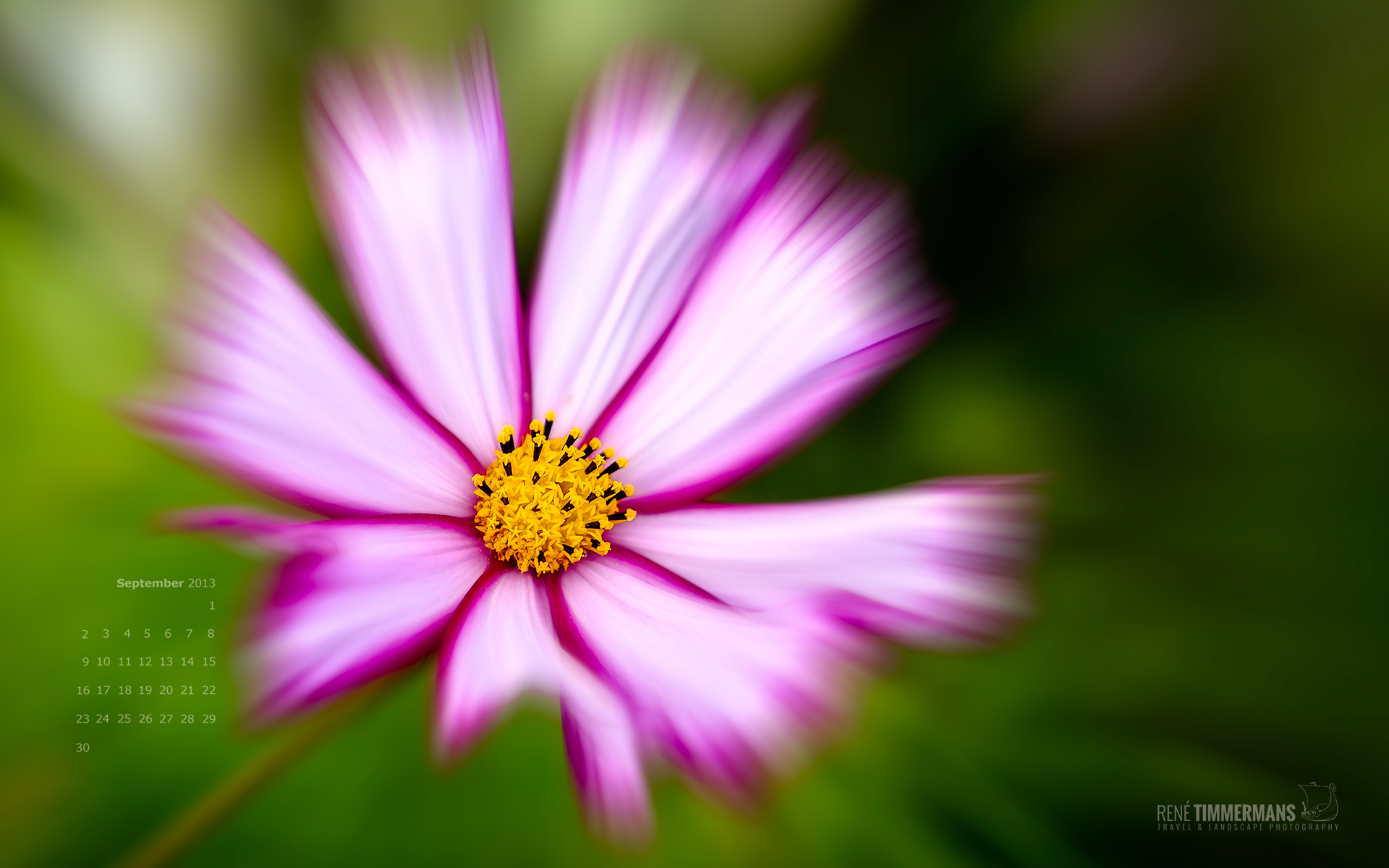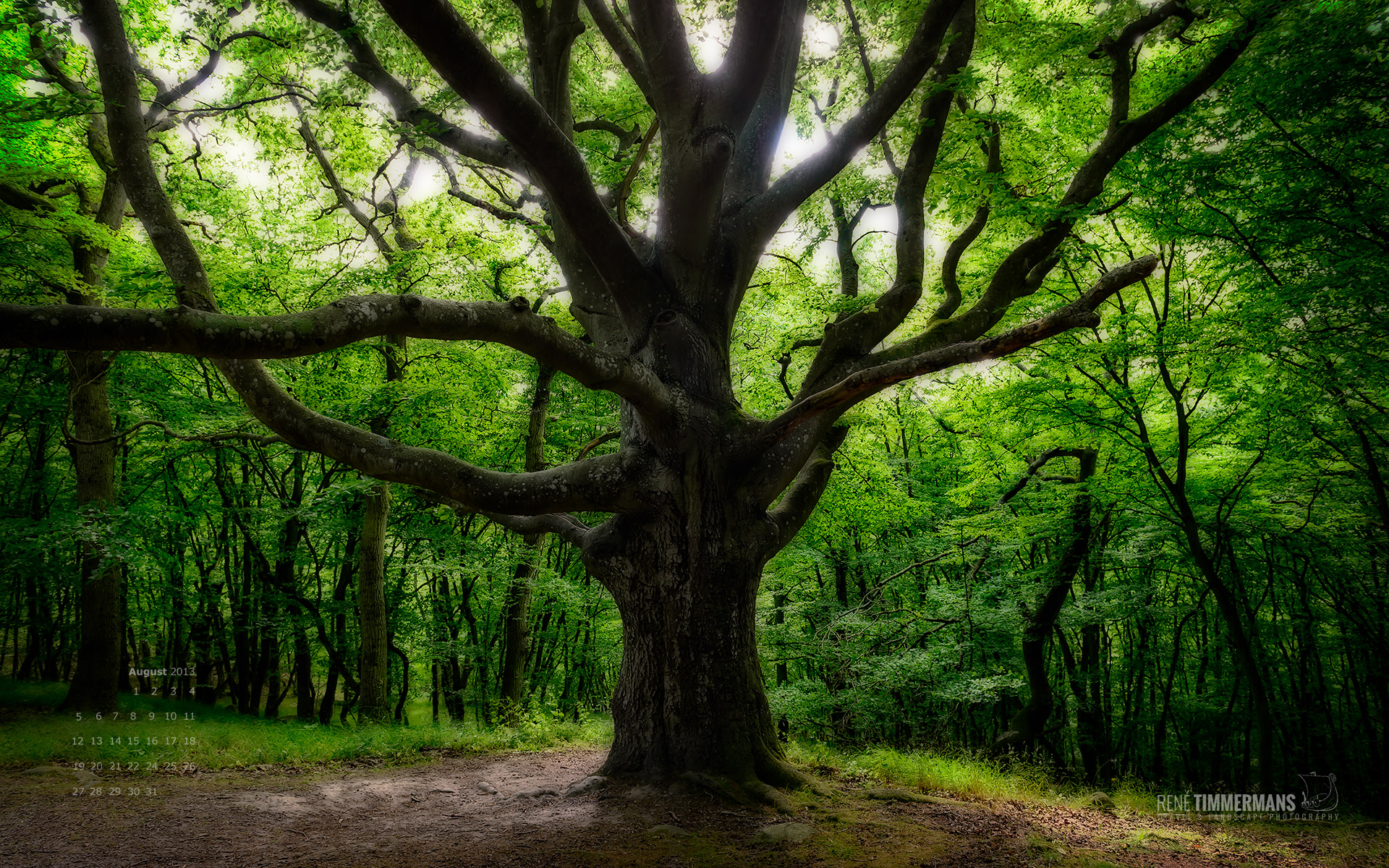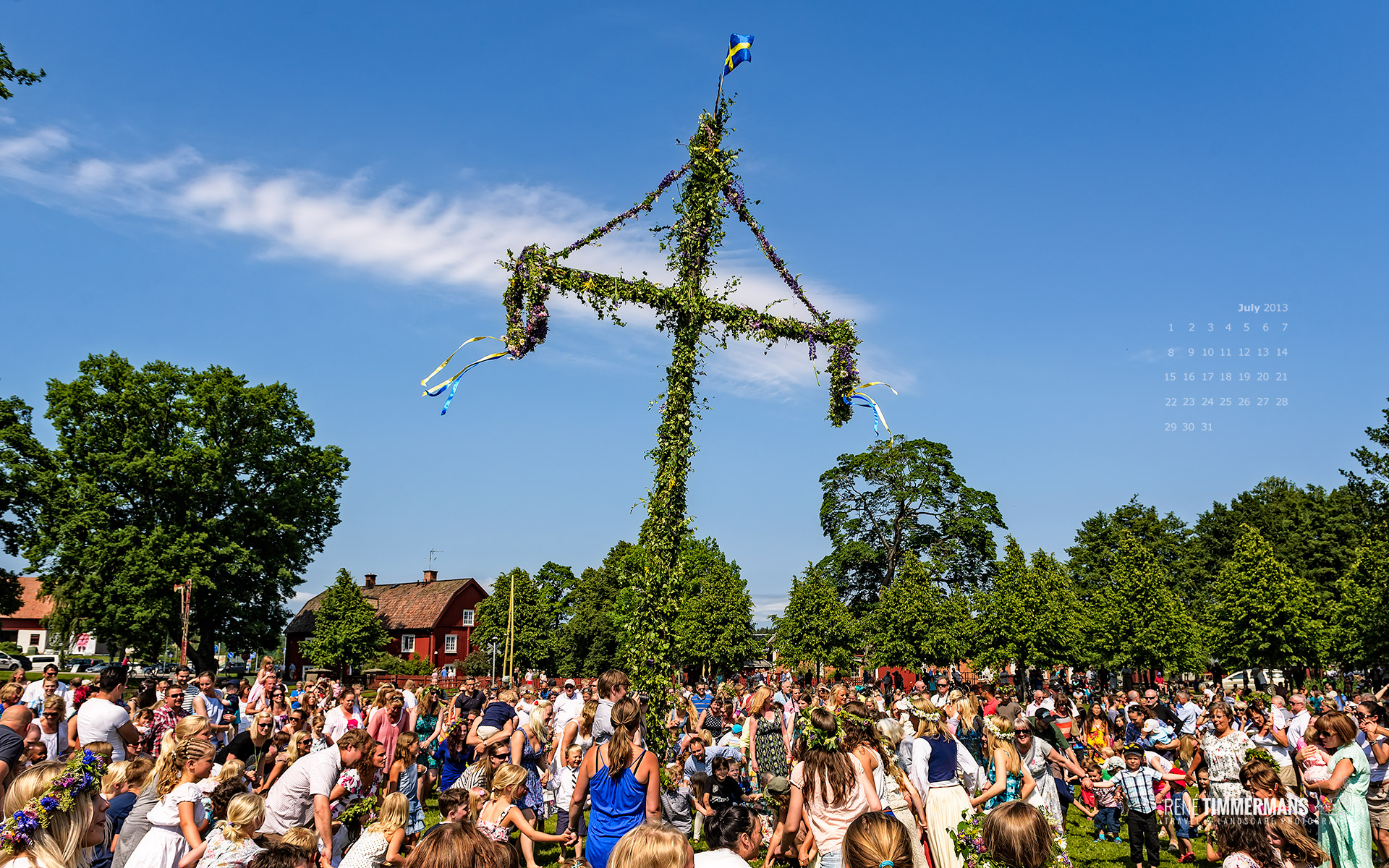
November 2013 wallpaper
November 2013 wallpaper – leaves of a waterlily floating on a mirror like water surface reflecting a blue sky with scattered clouds.

November 2013 wallpaper – leaves of a waterlily floating on a mirror like water surface reflecting a blue sky with scattered clouds.

The October 2013 wallpaper shows an empty bucket against the backdrop of a traditional Swedish red summerhouse. The photo was taken in the outskirts of the Stockholm archipelago on the island of Sandö.
Here is some background information (source: wikipedia.org) about the traditional Swedish red colour used on houses:
Falu red or Falun red is the name of a Swedish deep red paint well-known for its use on wooden cottages and barns. The paint originated from the copper mine at Falun in Dalarna, Sweden. The traditional colour remains popular today due to its effectiveness in preserving wood.
The earliest evidence of its use dates from the 16th century. During the 17th century Falu red was commonly used on smaller wooden mansions, where it was intended to imitate buildings with brick facing. Except in bigger cities like Stockholm and Gothenburg, and in the far south of Sweden, wood was the dominating building material. In the Swedish cities and towns, buildings were often painted with Falu red until the early 19th century, when the authorities began to oppose use of the paint. At that point in time more and more wooden buildings in urban areas were either painted in lighter colours (e.g. yellow, white) or sided with stucco. The number of buildings made of bricks (with stucco) also increased. However Falu red saw a surge in popularity in the countryside during the 19th century, when also poorer farmers and crofters began to paint their houses. Falu red is still widely used in the Swedish countryside.
The actual colour may be different depending on how much the oxide is burnt, ranging from almost black to a bright, light red. Different tones of red have been popular at different times. Recently a mix giving a dark green colour, Falu Grön, has also been produced by mixing black and ochre.
The paint consists of water, rye flour, linseed oil and tailings from the copper mines of Falun which contain silicates iron oxides, copper compounds and zinc. The current recipe was finalized in the 1920s. Aging Falu red will flake off, but restoration is easy since only brushing off of the loose flakes is required before repainting.

The September 2013 wallpaper is a photo from a Picotee Cosmos flower.
I took the photo during the summer in the gardens of Rosendals Trägård (Rosendal’s Garden) in Stockholm.
Enjoy it on your desktop for this month!

The photo for the August 2013 wallpaper was taken last month in the Stenshuvud National Park in the south-east of Sweden.
Stenshuvud National Park was founded in 1986; its area is 386 hectares (954 acres). The park was established in order to preserve a large natural area of special geological and biological significance, which also provides a valuable setting for outdoor recreation.
The legendary mount of Stenshuvud rises to a height of 97 meters above the sea. The view from its crest is magnificent. To the south, broad heaths and dry meadows bursting with flowers stretch across the level sandflats. Where they meet the sea, the sandflats open into an inviting bathing beach. The coastline to the east is more dramatic, with sharply gouged cliffs and fields of stone rubble; beyond, the blue sea with its open horizon. On clear days, the Danish island of Bornholm can be spotted to the southeast. During summer, the view inland is over the compact roof of a broadleaf forest.

It does not get more summery in Sweden than with the celebrations on Midsummer’s evening. The July 2013 wallpaper shows the traditional dancing around the midsummer pole in Mariefred during this year’s midsummer.
Below is an excerpt from Wikipedia on the Swedish Midsummer. It is a great read if you are interested in the history and meaning behind it.
“In modern Sweden, Midsummer’s Eve and Midsummer’s Day (Midsommarafton and Midsommardagen) were formerly celebrated on 23 June and 24 June, but since 1953 the celebration has been moved to the Friday and Saturday between 19 June and 26 June with the main celebrations taking place on Friday. It is one of the most important holidays of the year in Sweden, and probably the most uniquely Swedish in the way it is celebrated. When Sweden got its National day (6 June), discussions were held about making Midsummer the Swedish national day because of the strong civil celebration on this day.
Raising and dancing around a maypole (majstång or midsommarstång) is an activity that attracts families and many others. Before the maypole is raised, greens and flowers are collected and used to cover the entire pole. People dancing around the pole listen to traditional music and sing songs such as “Små grodorna” associated with the holiday. Some wear traditional folk costumes or crowns made of wild springs and wildflowers on their heads. The year’s first potatoes, soused herring and pickled herring, chives, sour cream, beer, snaps and the first strawberries of the season are on the menu. Drinking songs (snapsvisor) are also important at this feast, and many drink heavily.
Because Midsummer was thought to be one of the times of the year when magic was strongest, it was considered a good night to perform rituals to look into the future. Traditionally, young people pick bouquets of seven or nine different flowers and put them under their pillow in the hope of dreaming about their future spouse. In the past it was believed that herbs picked at Midsummer were highly potent, and water from springs could bring good health. Greenery placed over houses and barns were supposed to bring good fortune and health to people and livestock; this old tradition of decorating with greens continues, even though most don’t take it seriously. To decorate with greens was called att maja (to may) and may be the origin of the word majstång, maja coming originally from the month May. Other researchers say the term came from German merchants who raised the maypole in June because the Swedish climate made it impossible to find the necessary greens and flowers in May, and continued to call it a maypole. Today, however, it is most commonly called a “midsommarstång” (literally midsummer pole).
In earlier times, small spires wrapped in greens were erected; this probably predates the maypole tradition, which is believed by many to have come from the continent in the Middle Ages. Others argue that some form of Midsummer pole occurred in Sweden during the pre-Christian times, and was a phallic fertility symbol, meant to impregnate the earth, but as there were no records from those times it cannot be proven, and this idea might just be a modern interpretation of the pole’s form. The earliest historical mention of the maypole in Sweden is from the Middle Ages. Midsummer was, however, linked to an ancient fertility festival which was adapted into St. John’s Day by the church, even though it retained many pagan traditions, as the Swedes were slow to give up the old heathen customs. The connection to fertility is naturally linked to the time of year. Many young people became passionate at Midsummer, and this was accepted, probably because it resulted in more childbirths in March which was a good time for children to be born.”
Recent Comments